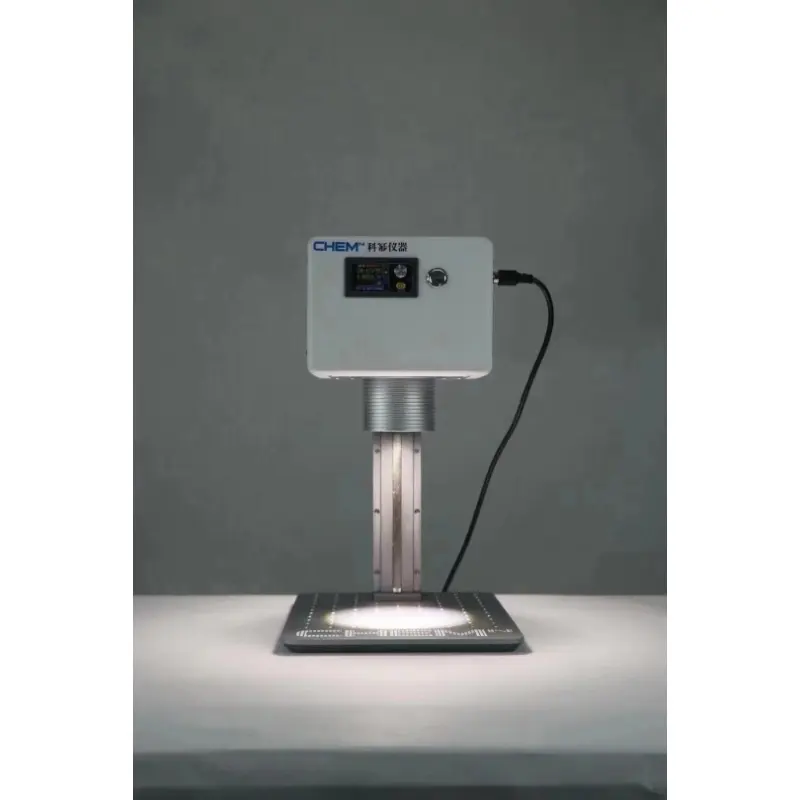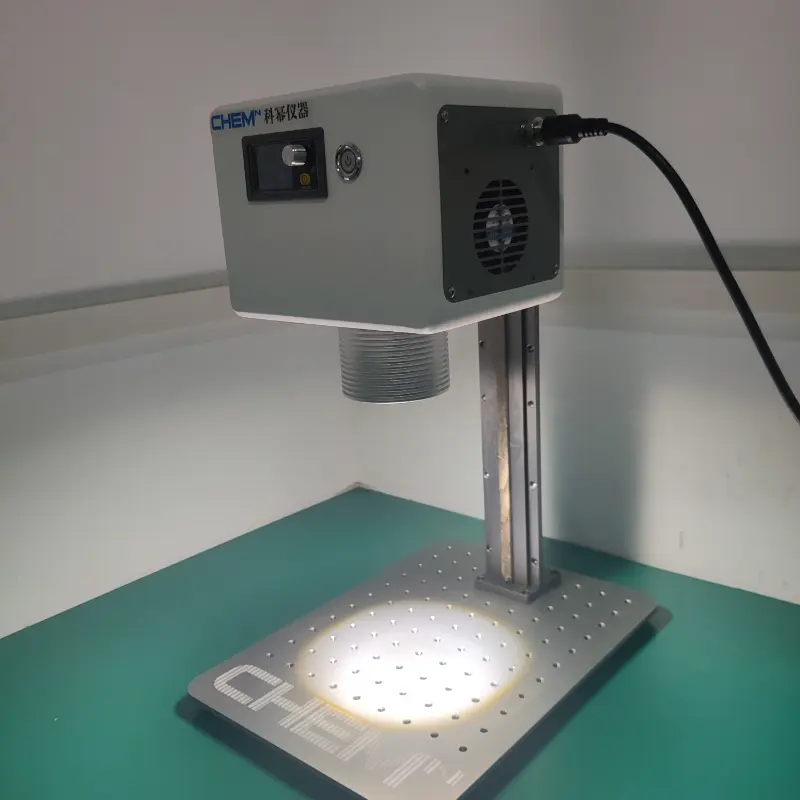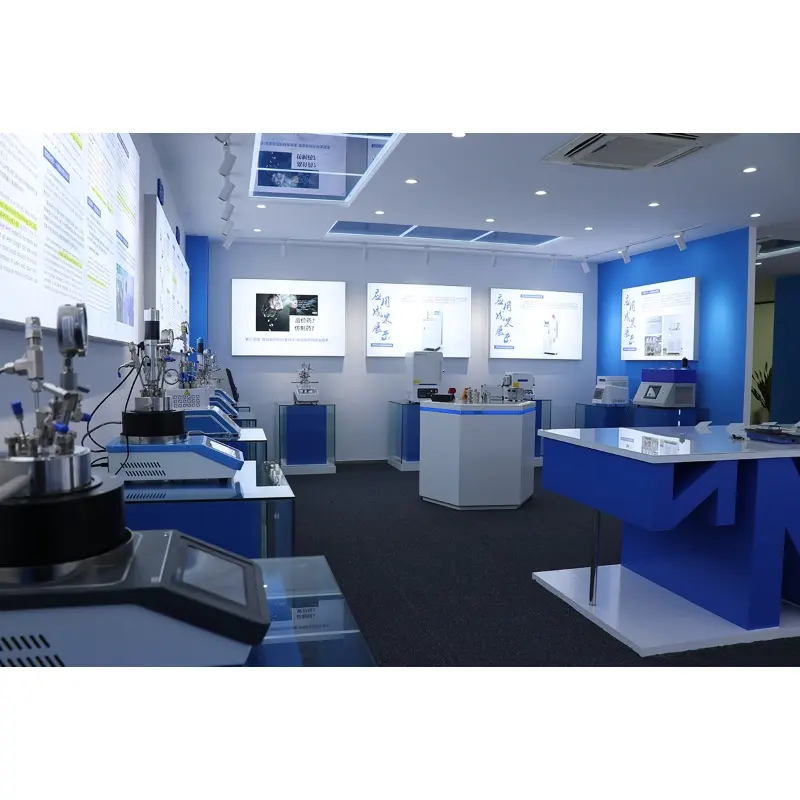Table des matières
Composants essentiels des simulateurs solaires, les lampes au xénon sont des outils indispensables à la recherche scientifique et à l'industrie modernes. Elles permettent de « reproduire » la lumière naturelle du soleil en laboratoire et de la contrôler avec précision, permettant ainsi d'étudier en profondeur l'interaction entre la lumière et la matière. Elles stimulent ainsi le développement de nombreux domaines de pointe, des nouvelles énergies à l'exploration spatiale.
Lampes au xénon : l'outil de base pour la simulation des spectres solaires
La raison fondamentale pour laquelle les lampes au xénon sont la source lumineuse privilégiée pour les simulateurs solaires réside dans leur spectre continu et leur similarité avec le spectre solaire. Lorsque le gaz xénon se décharge dans un arc électrique à haute pression, il émet un spectre continu couvrant les bandes ultraviolette, visible et proche infrarouge, correspondant étroitement à la distribution spectrale de la lumière solaire. Pour une meilleure précision de simulation, les simulateurs solaires sont généralement équipés de systèmes optiques complexes, notamment :
- Filtres : Utilisé pour ajuster précisément le spectre brut de la lampe au xénon, le rendant ainsi parfaitement conforme aux normes internationales (telles que AM1.5G, le spectre standard mondial de masse d'air 1.5). Cela garantit que la lumière solaire simulée à la surface de la Terre présente des composantes spectrales presque identiques aux conditions réelles.
- Dispositifs de mise en forme optique : Des lentilles et des miroirs, par exemple, servent à focaliser ou à diffuser le faisceau lumineux, garantissant ainsi une irradiance très uniforme dans la zone de test cible. Cette uniformité est essentielle pour mesurer les performances globales des dispositifs optoélectroniques.
- Systèmes de contrôle de l'intensité lumineuse : Obtenez un contrôle précis de l'irradiance (intensité lumineuse) en ajustant la puissance de la lampe au xénon ou en utilisant des ouvertures, en simulant des conditions sous différents climats ou intensités solaires.
Cette capacité de contrôle précise donne simulateurs solaires à lampe au xénon des avantages inégalés :
- Haute reproductibilité et comparabilité : Chaque expérience peut être menée dans des conditions d'éclairage identiques et contrôlées, garantissant ainsi la précision des résultats expérimentaux et la comparabilité des données entre différents instituts de recherche. Ceci est essentiel pour établir des normes industrielles et faciliter la coopération internationale.
- Capacité de test accélérée : En augmentant l’irradiance de la lumière simulée, le processus de vieillissement des matériaux qui prendrait des années, voire des décennies, dans des environnements extérieurs réels peut être simulé en quelques semaines ou quelques mois, raccourcissant considérablement les cycles de développement et de vérification de nouveaux matériaux et produits.
- Environnement intérieur contrôlé : Évite l’influence de facteurs incontrôlables tels que les changements climatiques extérieurs et les variations saisonnières sur les résultats expérimentaux, permettant aux chercheurs de se concentrer davantage sur l’impact de la lumière elle-même sur l’échantillon.
Applications expérimentales étendues des simulateurs solaires à lampes au xénon
Les simulateurs solaires à lampe au xénon jouent un rôle irremplaçable dans plusieurs domaines clés, servant de puissant moteur au progrès technologique.
1. Essais et caractérisation des nouveaux dispositifs photovoltaïques (PV)
La technologie photovoltaïque (PV) est au cœur de la transition énergétique mondiale actuelle. Simulateurs solaires à lampe au xénon sont des outils essentiels dans la recherche, le développement et la production de cellules et de modules photovoltaïques :
- Caractérisation de l'efficacité des cellules PV : Mesure les courbes caractéristiques JV (courant-tension) de diverses cellules solaires (par exemple, silicium cristallin, couches minces, pérovskite, cellules organiques) pour évaluer leur tension en circuit ouvert (Voc), courant de court-circuit (Isc), point de puissance maximale (Pmax), et facteur de remplissage (FF), calculant ainsi avec précision l'efficacité de conversion photoélectrique de la cellule.
- Analyse de l'efficacité quantique (EQE/IQE) : Mesure la capacité de réponse de la cellule sous différentes longueurs d'onde de lumière, aidant à acquérir une compréhension plus approfondie des mécanismes d'absorption de la lumière et de transport de charge de la cellule, fournissant une base pour l'optimisation de la structure des matériaux et des dispositifs.
- Études de stabilité et de dégradation à long terme : Simule l'effet d'une exposition à la lumière à long terme sur les performances des dispositifs photovoltaïques, en évaluant leur durée de vie et leur fiabilité, en particulier pour les nouveaux matériaux comme les pérovskites, dont la stabilité sous haute température, forte humidité et exposition à la lumière est un point chaud de recherche.
- Tests de certification des modules PV : Les simulateurs solaires conformes aux normes internationales telles que IEC et ASTM sont des équipements de certification obligatoires pour les produits de modules photovoltaïques entrant sur le marché, garantissant que les produits répondent aux normes de performance et de sécurité de conception.
2. Recherche sur le vieillissement des matériaux et leur résistance aux intempéries
La durabilité des matériaux sous la lumière du soleil est un facteur clé déterminant leurs perspectives d’application. Simulateurs solaires à lampe au xénon fournir une puissante plateforme de recherche aux scientifiques des matériaux :
- Essais de vieillissement accéléré et de résistance aux intempéries : Largement utilisés dans des domaines tels que les revêtements, les plastiques, le caoutchouc, les textiles, les matériaux de construction et les composants intérieurs et extérieurs automobiles, ces tests simulent les effets synergétiques de facteurs environnementaux tels que l'ensoleillement, la température et l'humidité, accélérant ainsi l'évaluation des phénomènes de vieillissement des matériaux, tels que les changements de couleur, les fissures, le farinage et la dégradation des propriétés mécaniques. Ces tests sont essentiels au développement de nouveaux matériaux hautement résistants aux intempéries.
- Évaluation de l’efficacité des produits de protection solaire : Utilisé pour déterminer avec précision la Facteur de protection solaire (SPF) et Niveau de protection UVA (PA) de crèmes solaires, de vêtements de protection solaire et d'autres produits, en veillant à ce qu'ils répondent aux demandes des consommateurs et aux exigences réglementaires.
- Recherche sur les matériaux photochromiques : Étudie le mécanisme des changements de couleur ou de propriétés optiques dans les matériaux sous l'effet de la lumière, tels que les fenêtres intelligentes et les capteurs optiques.
- Recherche sur la biodégradation : Évalue l’effet de l’exposition à la lumière sur le processus de dégradation des matériaux biodégradables.
3. Simulation de l'environnement spatial
Dans le vaste univers, les engins spatiaux et les satellites sont confrontés à des environnements de rayonnement solaire extrêmes. Simulateurs solaires à lampe au xénon sont les héros méconnus de l'exploration spatiale :
- Test de résistance aux radiations des matériaux des engins spatiaux : Simule un fort rayonnement UV, visible et infrarouge dans l'espace pour tester la dégradation des performances des matériaux extérieurs, des revêtements et des panneaux solaires des engins spatiaux lors d'une exposition spatiale à long terme, garantissant leur fiabilité dans des conditions extrêmes.
- Validation du système de contrôle thermique : Évalue l'efficacité opérationnelle des systèmes de contrôle thermique des engins spatiaux (par exemple, radiateurs, caloducs) dans différentes conditions de flux thermique en simulant les angles et les intensités d'incidence solaire.
- Simulation de l'environnement Mars/Lune : Combine des systèmes à vide et à basse/haute température pour créer un environnement de surface lunaire ou martienne plus complet, testant les performances opérationnelles des atterrisseurs et des rovers sous des différences de température et de rayonnement extrêmes, fournissant des données critiques pour les missions d'exploration de l'espace lointain.
4. Recherche sur la photocatalyse et la photochimie
Simulateurs solaires à lampe au xénon jouent également un rôle important dans la gouvernance environnementale et le développement de nouveaux catalyseurs :
- Dégradation photocatalytique des polluants : Simule les réactions photocatalytiques induites par la lumière solaire pour étudier l'efficacité et le mécanisme de nouveaux photocatalyseurs (par exemple, TiO2, g-C3N4) dans la dégradation des polluants organiques et des ions de métaux lourds dans l'eau ou l'air.
- Séparation photocatalytique de l'eau pour la production d'hydrogène : Simule la séparation photocatalytique de l'eau par énergie solaire pour la production d'hydrogène, explorant des technologies de production d'hydrogène efficaces et durables, fournissant des solutions pour les futurs systèmes énergétiques.
- Recherche en photochimie atmosphérique : Simule les processus de transformation photochimique des aérosols et des composés organiques volatils (COV) dans l'atmosphère sous la lumière du soleil, aidant à comprendre et à prédire la formation et l'évolution de la pollution atmosphérique.
5. Croissance des plantes et recherche agricole
Dans la recherche biologique et agricole, simulateurs solaires à lampe au xénon ont également leurs applications uniques :
- Recherche en photobiologie végétale : Simule les effets de différentes intensités lumineuses et spectres sur la croissance des plantes, l'efficacité photosynthétique, le développement morphologique, la floraison et la fructification, ainsi que la synthèse de métabolites secondaires, fournissant une base scientifique pour optimiser les conditions de production agricole.
- Recherche sur la photoréponse microbienne : Étudie la croissance, le métabolisme et la synthèse des produits des micro-organismes (par exemple, les algues) dans différentes conditions d'éclairage, comme pour la production de biocarburants.
Conclusion
Grâce aux avancées technologiques, les simulateurs solaires à lampes au xénon évoluent vers une plus grande précision, des plages spectrales plus larges, des zones d'éclairage plus vastes et un contrôle plus intelligent. À l'avenir, ils continueront de jouer un rôle expérimental irremplaçable dans la promotion des énergies propres, des matériaux haute performance, de l'exploration spatiale et du développement durable, offrant un soutien expérimental continu à l'humanité pour explorer les mystères de la lumière et exploiter sa puissance.


À propos de Kemi
Fondée en 2014, Anhui Kemi Instrument Co., Ltd. est une entreprise de haute technologie spécialisée dans la R&D et la fabrication d'instruments de recherche scientifique. Avec ses 10 000 m² de surface de travail, l'entreprise dessert plus de 20 000 instituts de recherche dans le monde, dont les plus grandes universités chinoises. Kemi Instrument fournit des équipements et des solutions sur mesure de haute qualité, en collaboration avec des fournisseurs et des universités de premier plan. L'entreprise ambitionne de devenir un leader mondial de l'instrumentation de recherche scientifique.

